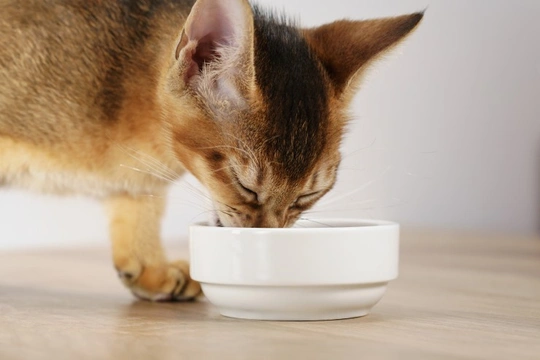
How to establish how much food your cat needs
When it comes to cats and dogs, their attitudes to food are rather different-dogs will generally eat until well past the point of fullness if they are allowed to, and so, tend to be prone to gaining extra weight if their food intake-and treats-are not carefully monitored. Cats on the other hand can usually be trusted to free-feed and stop eating when they have had enough, and for active cats that eat little and often, it is rare for a cat to be significantly overweight.
However, there are of course exceptions to every rule, and some cats prefer snacking and sunbathing to exercising and moving around-and of course as cats get older, they tend to become less active and spend more time snoozing too. This means that in many cases, you will have to monitor or police your cat’s food intake, in order to keep them at a healthy weight.
Even if your cat is fit and active and does not spend all of their time with their heads in the food bowl, it is still a good idea to know roughly how much your cat eats in a day, and so, how much food to offer. This can help to prevent food waste, and also, give you an indication if your cat begins eating more or less than normal for any reason.
However, knowing how to establish how much food your cat needs in a day is something that requires you to take into account various different factors, and judge their requirements accordingly. In this article, we will look at the various factors you need to take into account, in order to establish how much food your cat needs on a daily basis. Read on to learn more.
Your cat’s weight
The starting point for establishing how much food your cat needs is to find out their current weight, which means getting them onto a scale! You should also establish at this point if their weight is a healthy one for their build, or if they are slightly over or underweight. You can then move forwards to the next stage.
Your cat’s build
There is no one ideal weight for cats, because like all other animals including people, their height and build comes into play too. For some large cats, such as those of the Norwegian Forest breed, a 6.5kg weight might be ideal or even lean given their build, while for a smaller, more petite cat, this may be significantly overweight.
Even across one breed, there is no magical figure that works for every cat-if your cat is tall and stocky, they will be able to carry more weight in a healthy way than if they are small and finely boned.
If you are having problems taking an objective view of your own cat, ask your vet for their thoughts.
Their age
Your cat’s age is an important factor when it comes to their average activity levels and how much they should weigh, and younger and very active cats will need to eat more food to maintain a healthy weight than a cat that is older and/or fairly sedentary.
This means that a cat that is very active and always looking for something to do can eat significantly more than a less active cat, but remain at a healthy weight.
Activity levels
Your cat’s activity level is of course one of the main factors to consider when working out their ideal food intake. Cats that play a lot, hunt actively and generally spend a lot of time moving around will burn more calories, and so need more food.
The type of food you feed
The type of food your cat eats is something to bear in mind when working out how much food they need-dry food tends to pack more calories and nutrients into the food like for like by weight than wet food, which of course has a higher water content.
The food you give to your cat should also be chosen with their age and lifestyle in mind, and choosing the right food that is the best fit for your cat will also provide the most economical and appropriate way to feed them.
Feeding guidelines
All pre-packaged cat food sold in the UK will have basic feeding guidelines on the packaging, and this should give you a simple outline of how much to give to your cat on a daily basis. Following the feeding guidelines exactly is often the right choice, but you should of course bear in mind your cat’s weight, build and activity levels too, and make adjustments if needed.
Treats
Don’t forget that giving your cat treats and snacks is something that you should also factor into your cat’s food intake, and if your cat does not reach their ideal weight with your feeding regime, think about the effect that treats can have too!
Hunting
Finally, cats that are adept hunters also require a little extra consideration in terms of their food intake. If your cat hunts but does not eat their prey, they may actually need more food than a non-hunting cat, due to the extra energy they expend hunting.
If your cat does eat a large amount of rodents, this may mean that they need less food, but the odd rat now and then will not make much difference!



